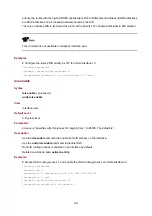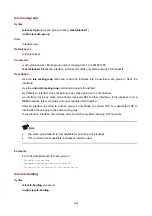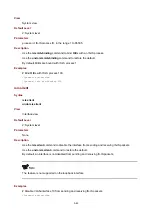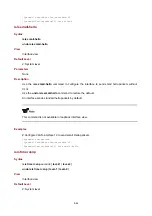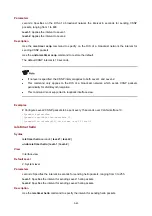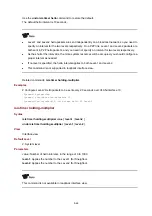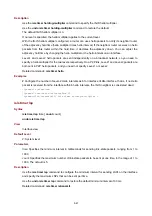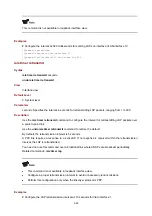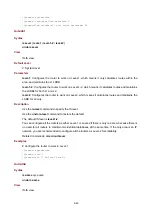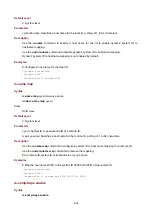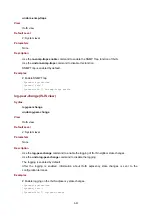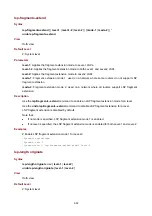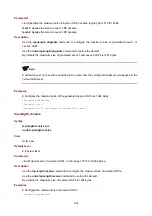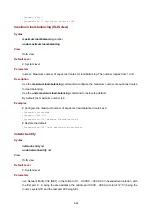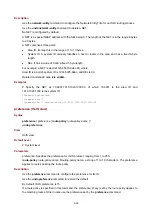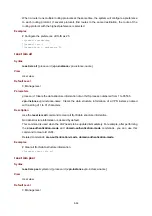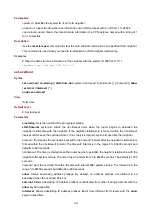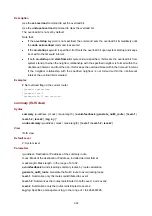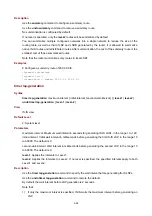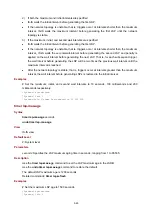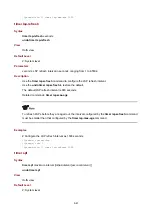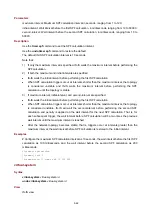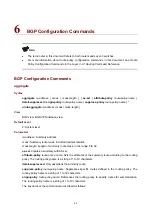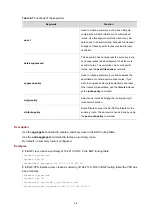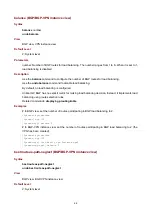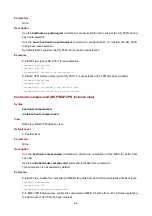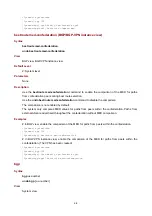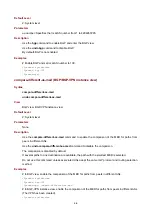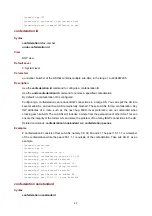
5-55
Description
Use the
network-entity
command to configure the Network Entity Title for an IS-IS routing process.
Use the
undo network-entity
command to delete a NET.
No NET is configured by default.
A NET is a special NSAP address with the SEL being 0. The length of the NET is in the range 8 bytes
to 20 bytes.
A NET comprises three parts:
z
Area ID. Its length is in the range of 1 to 13 bytes.
z
System ID. A system ID uniquely identifies a host or router in the area and has a fixed 6-byte
length.
z
SEL. It has a value of 0 and a fixed 1-byte length.
For example, a NET is ab.cdef.1234.5678.9abc.00, where,
Area ID is ab.cdef, system ID is 1234.5678.9abc, and SEL is 00.
Related commands:
isis
,
isis enable
.
Examples
# Specify the NET as 10.0001.1010.1020.1030.00, of which 10.0001 is the area ID and
1010.1020.1030 is the system ID.
<Sysname> system-view
[Sysname] isis 1
[Sysname-isis-1] network-entity 10.0001.1010.1020.1030.00
preference (IS-IS view)
Syntax
preference
{
preference
|
route-policy route-policy-name
} *
undo preference
View
IS-IS view
Default Level
2: System level
Parameters
preference
: Specifies the preference for IS-IS protocol, ranging from 1 to 255.
route-policy route-policy-name
: Routing policy name, a string of 1 to 19 characters. The preference
applies to routes passing the route policy.
Description
Use the
preference
command to configure the preference for IS-IS.
Use the
undo preference
command to restore the default.
By default, IS-IS preference is 15.
If a route policy is specified in this command, the preference (if any) set by the route policy applies to
the matching routes. Other routes use the preference set by the
preference
command.

